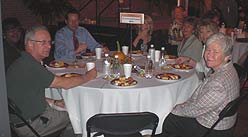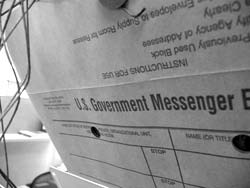About the author: Larry Teller joined EPA’s Philadelphia office in its early months and has worked in environmental assessment, state and congressional liaison, enforcement, and communications.
My favorite anthropology professor at the University of Pennsylvania years ago, David B. Stout (famously, in his playful words, “not a Leakey lover,” but that’s another story), insisted that scientists are culture bound by their own culture—unable to fluently interact with, or even fully understand, other cultures. This teaching came to mind yesterday during a meeting in EPA’s mid-Atlantic regional office to begin defining a new website about “green infrastructure;” make that “natural infrastructure;” no, perhaps it’s “limited impact development?” or was it “green communities,” or “green buildings.”
My sincere motto at such meetings, of course, is “I’m from the public affairs office and I’m here to help.” Indeed, as the regional web content coordinator, my job is to help make our websites useful, targeted communications tools that follow EPA’s web standards and best practices. One of these best practices is content coordination, to minimize repetition, confusion and gaps among related agency web content.
I tried not to show how much the conversation made my head hurt, among a group of earnest, cooperative colleagues who are eager to help developers, planners, elected officials, public works managers, environmentalists and the public guide sustainable development. With such a diverse audience, and so many EPA programs individually focused on different slices of the green development pie, it unfortunately wasn’t my first experience where web communications considerations (the tail) forced us to confront the overlap or gaps between policies and programs (the dog). Shouldn’t it work the other way? Wouldn’t it better serve EPA, our stakeholders and the environment if related programs were more clearly defined, or combined before turning our attention to public outreach? (These questions aren’t rhetorical; please answer them.)
Our group yesterday didn’t know enough about policy integration our agency may be doing to bring the principles and virtues of these green initiatives together to better serve the many concerned external people. As a result–and this is more intriguing challenge than complaint—we’re seeking some manner of content integration as we conceive and write a new website.
Professor Stout wouldn’t be surprised by what we face, but may I ask, dear reader, do you, too, see what we face as the tail wagging the dog?


 Employees aren’t the only ones who have taken notice of EPA’s family-friendly “environment.” This is the 4th year that our EPA campus has been named to the NC Family Friendly Top 40 which is sponsored by
Employees aren’t the only ones who have taken notice of EPA’s family-friendly “environment.” This is the 4th year that our EPA campus has been named to the NC Family Friendly Top 40 which is sponsored by 
 Each week we write about the science behind environmental protection.
Each week we write about the science behind environmental protection.  While I can’t speak for other science writers, I might just have to admit that what I do is easier than creating fiction. There never seems to be a shortage of fascinating stories unfolding at labs and field sites wherever researchers or engineers are running experiments, gathering data, or building the next prototype. And I’ve got the added benefit that my personal interests—the environment and human health—dovetail perfectly with EPA’s mission.
While I can’t speak for other science writers, I might just have to admit that what I do is easier than creating fiction. There never seems to be a shortage of fascinating stories unfolding at labs and field sites wherever researchers or engineers are running experiments, gathering data, or building the next prototype. And I’ve got the added benefit that my personal interests—the environment and human health—dovetail perfectly with EPA’s mission. I’ve worked at US EPA since the early 90s. I must enjoy my work, because I’m always surprised to watch the years mount up.
I’ve worked at US EPA since the early 90s. I must enjoy my work, because I’m always surprised to watch the years mount up.